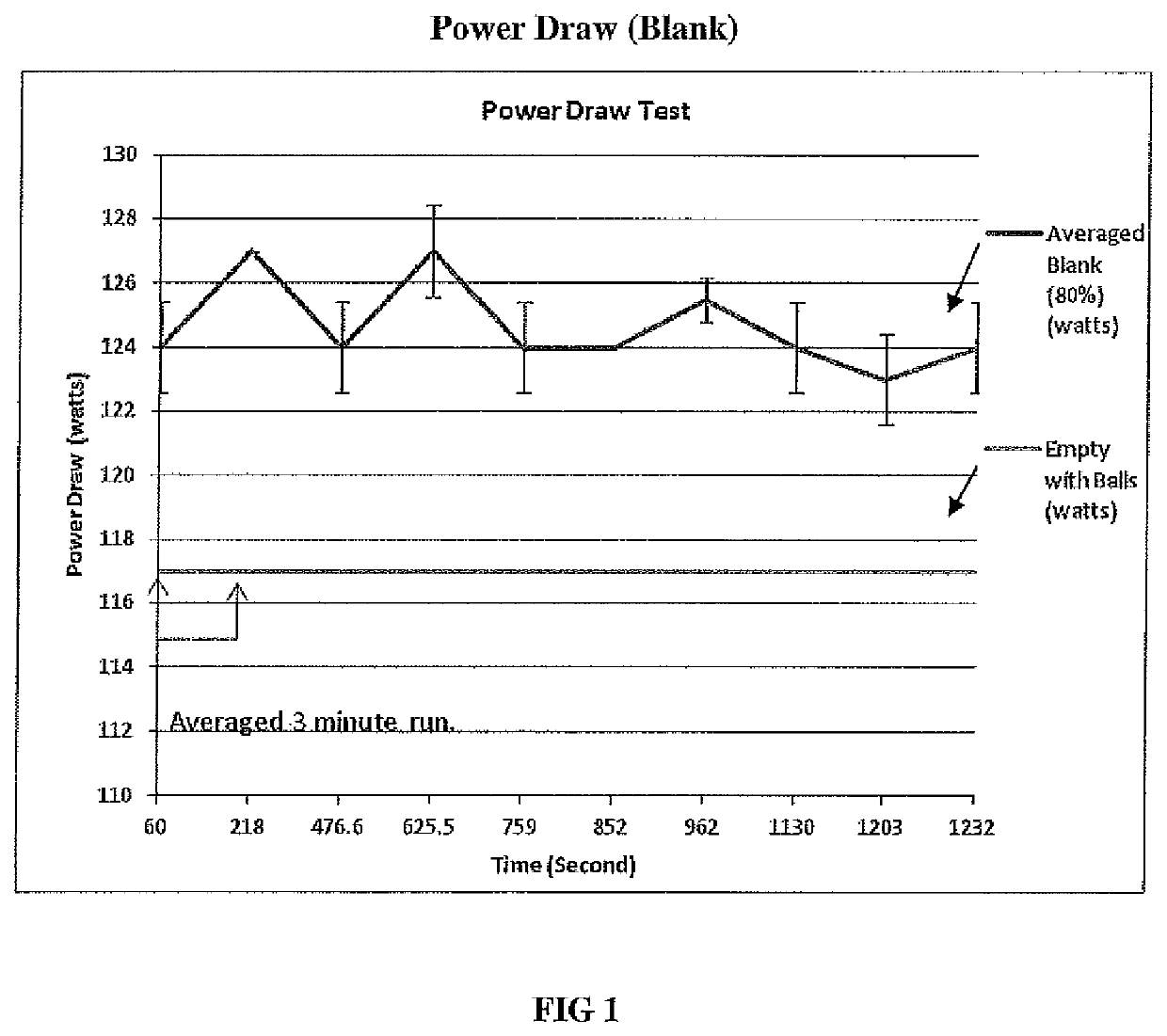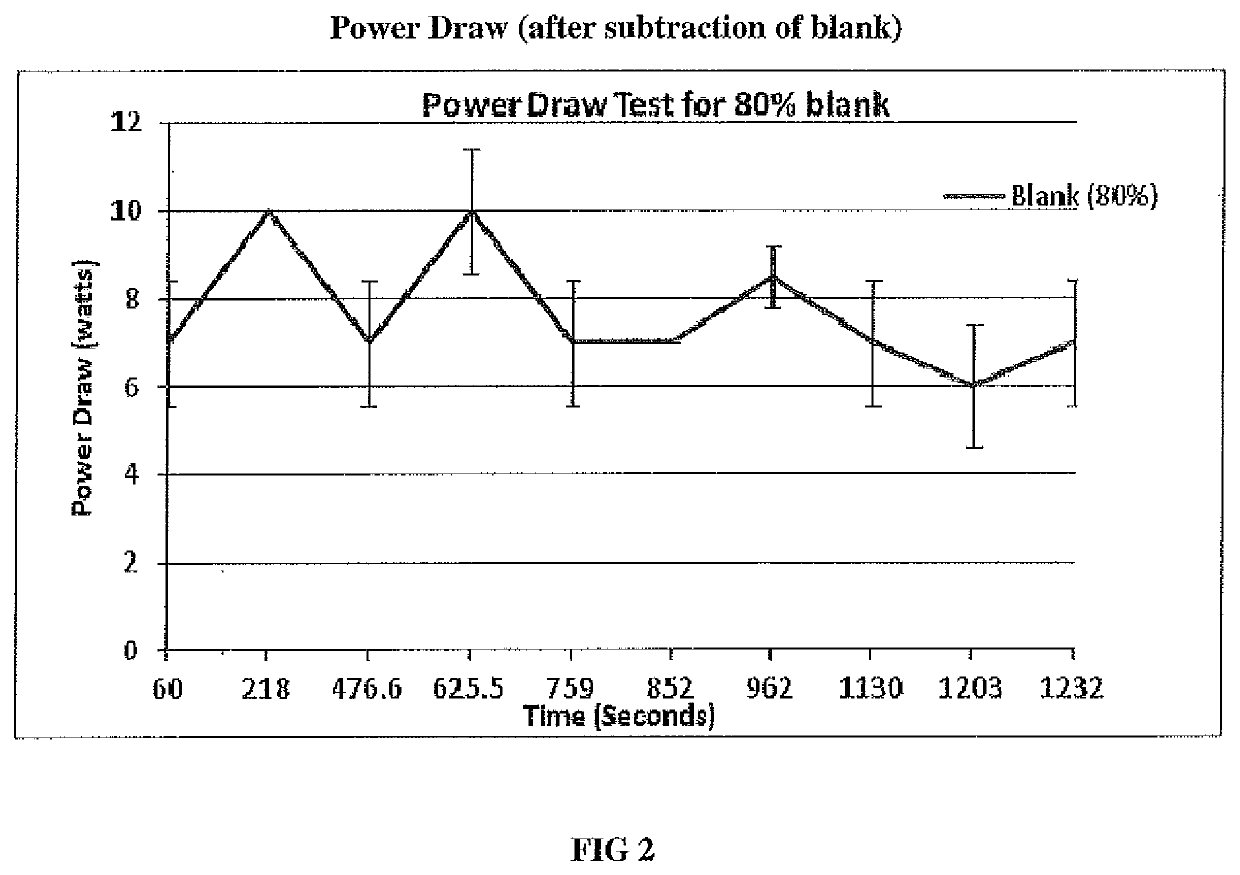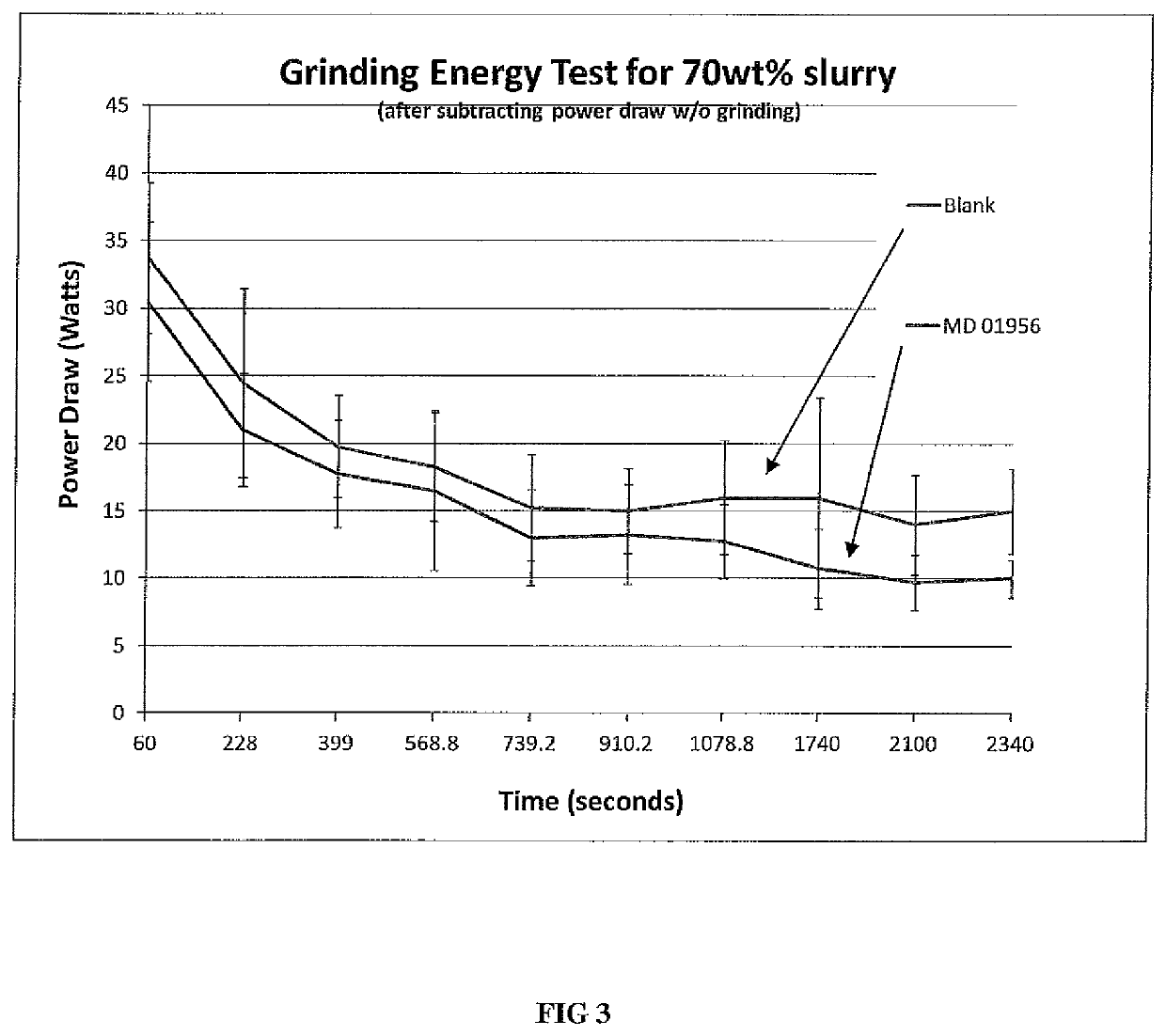Hydrolyzed starches as grinding aids for mineral ore processing
a technology of hydrolyzed starch and mineral ore, which is applied in the field of hydrolyzed starch as grinding aids for mineral ore processing, can solve the problems of very energy-intensive and inefficient grinding stage of mineral ore processing, and achieve the effects of reducing downtime, increasing capacity and throughput of mineral ore, and shortening time periods
- Summary
- Abstract
- Description
- Claims
- Application Information
AI Technical Summary
Benefits of technology
Problems solved by technology
Method used
Image
Examples
example 1
Comparative
[0043]Gold ore with the particle size distribution characterized by 100% of the material below ⅜ of an inch was obtained from a North American mine and dried to remove residual moisture. The gold ore was ground applying the equipment and procedures described above. The ground samples were then tested for particle size distribution, stickiness, yield stress and viscosity using the analytical procedures described above. The results are summarized in Table 1 below. The data in Table 1 represents an average of 2 to 4 repetitive runs.
[0044]
TABLE 1TotalYieldViscosityViscosityAmount ofAmt. ofSlurry Wt.%Stress(Pas) at(Pas) at% SlurryOre (gram)Water(gram)Stickiness(D / cm2)13 s−1730 s−1501501503001.011.000.10000.06015010025017.9533.491.20560.1422701506421459.4090.535.50030.265080150371871001708.58128.1242.3196
[0045]The characteristics of ground gold ore change dramatically with increase in slurry concentration. The slurry at 50% by weight is very fluid and visually inform. The slurr...
example 2
[0049]In this example maltodextrin in an amount of 0.02% by dry weight of the mineral ore was added to 150 grams (gm) of gold ore that is the same as described above for Example 1 and 64 grams of water to make a slurry having a 70% mineral ore content as set forth in Table 3. Maltodextrin, in dry form (MD 01956), from Cargill, Incorporated, Minneapolis, Minn., USA (“Cargill”) was used, which is noted in the Additive column in Table 3. The slurry was ground using the equipment and procedures described above. The ground ore was analyzed for stickiness, viscosity and yield stress using the procedures described above. The analytical results for this example are summarized in Table 3 below with reference to the maltodextrin Additive. Maltodextrin addition results' in strong decrease in ore stickiness, viscosity and yield stress compared to 70% by weight slurry without additive, used as the control (from Example 1 with results repeated in Table 3).
[0050]
TABLE 3AmountAmountTotalofofSlurryY...
example 3
[0053]In this example the grinding aid composition comprised dextrin in dry powder, Dextrin Plus 8702 from Cargill, which is noted in the Additive column in Table 3. The dextrin was incorporated through addition to water phase prior to ball mill testing. Dextrin in an amount of 0.02% by dry weight of the mineral ore was added to 150 grams of gold ore that is the same as described above for Example 1 and 64 grams of water to make slurry having a 70% by weight mineral ore content as set forth in Table 3. The slurry was ground using the equipment and procedures described above. The ground ore was analyzed for stickiness, viscosity and yield stress using the procedures described above. The results of the dextrin impact at 0.02% by dry weight per mineral ore are shown in Table 3 with respect to the dextrin additive. Dextrin reduces stickiness, viscosity and yield stress for 70% by weight mineral ore slurry. Particle size distribution of the dried, ground ore with added dextrin was simila...
PUM
| Property | Measurement | Unit |
|---|---|---|
| size fraction | aaaaa | aaaaa |
| particle size | aaaaa | aaaaa |
| dry weight | aaaaa | aaaaa |
Abstract
Description
Claims
Application Information
 Login to View More
Login to View More - R&D
- Intellectual Property
- Life Sciences
- Materials
- Tech Scout
- Unparalleled Data Quality
- Higher Quality Content
- 60% Fewer Hallucinations
Browse by: Latest US Patents, China's latest patents, Technical Efficacy Thesaurus, Application Domain, Technology Topic, Popular Technical Reports.
© 2025 PatSnap. All rights reserved.Legal|Privacy policy|Modern Slavery Act Transparency Statement|Sitemap|About US| Contact US: help@patsnap.com



